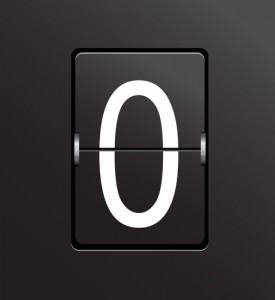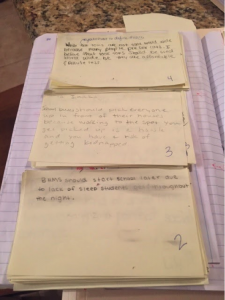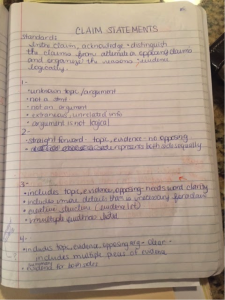 A funny thing happened as my students were wrapping up their narrative journalism papers a couple weeks ago on the shiny new Chromebooks I’d reserved for the assignment. As I was reviewing a few formatting details with them, it suddenly dawned on me that my deadline for a hard copy of the paper–the end of the hour–was physically impossible. There is no printer attached to our Chromebook carts.
A funny thing happened as my students were wrapping up their narrative journalism papers a couple weeks ago on the shiny new Chromebooks I’d reserved for the assignment. As I was reviewing a few formatting details with them, it suddenly dawned on me that my deadline for a hard copy of the paper–the end of the hour–was physically impossible. There is no printer attached to our Chromebook carts.
After panicking momentarily and shrugging off the realization in front of the kids, I remembered a lovely feature of Turnitin.com. I told my students to submit their papers to Turnitin as usual, and that no hard copy would be necessary. In place of the normal written feedback on their papers and on an attached district rubric, my juniors would be getting three minutes of my silky-smooth voice walking them through their writing, using Turnitin’s audio feedback feature.
“Pass me the mic”
You should know that there are lots of educational tools out there for providing audio feedback to students. If all else fails, the phone app Voxer will let you share voice memos with anyone who “friends” you in the application (which can be done without revealing your actual cell number).
If getting ahold of a recording method isn’t a problem but the huge shift in how you provide feedback is, then I’d ask you to consider why conferencing remains the most impactful method of improving student writing. Kids listen when you talk to them one-on-one. Even the reluctant writers.
In fact, The Writing Center at the University of Wisconsin-Madison suggests that the best feedback for student writing “mirrors conversation with student-writers.” Though speaking your thoughts aloud falls one voice short of a “dialogue,” it certainly allows you to imitate the key elements of a good writing conference: your supportive tone of voice, the context for your criticisms, and clear guidance for how to move forward.
Talk Them Up
 Let’s consider briefly what written feedback tends to look like when you have 100 essays to grade.
Let’s consider briefly what written feedback tends to look like when you have 100 essays to grade.
You can use a coded system that reduces full ideas to symbols (that your lowest readers will ignore), you can write slightly longer phrases in the tiny margins (which your kids may not be able to read), or you can attempt to provide a full-bodied paragraph of feedback at the end of each essay (which will eventually give you carpal-tunnel syndrome and break your spirit completely…oh, and many of your lowest writers won’t bother to read it.).
I want to suggest to you that audio feedback solves ALL of these problems. In place of countless marks and comments about a student’s grammar, for example, you can now make one supportive, constructive observation. Here’s one hypothetical piece of feedback about possessives:
“One area you should be focused on in future essays is knowing when to use the possessive versus when something is plural. You confuse the two twice in your first paragraph. You use some really interesting syntax throughout the piece, so this small punctuation issue is holding back the power of how great the rest of your writing is.”
See how I softened the blow of the feedback by connecting it to a reminder of something done well? That’s a lot harder to do in the one-inch margins of the essay itself.
What’s more, you can tell them a sort of “story” about their writing. In place of fragmented ideas like “weak intro” or “explain this better” you can walk them through a coherent examination of their paper’s successes and struggles:
“Notice how your thesis is ambiguous about character X? Now look at how much your second body paragraph struggles to make a clear point about how X behaves in the final scene. Your vagueness in the introduction is keeping you from maintaining a clear focus in your body paragraphs.”
And really, that’s the big advantage to audio feedback: isolated, pragmatic written comments peppering the margins are transformed into a comprehensive walkthrough of their writing. If your department uses a standardized rubric, the structure of your feedback is even provided for you.
Students Want to Listen
I’ve found that even my reluctant writers and apathetic learners are intrigued by the idea of a few minutes of audio just for them. If you keep the tone friendly, they’re especially interested. It feels personal–like you’ve set aside time to speak just to them.
If you aren’t so sure your kids will be as eager about it, save the score of their paper for somewhere at the end of the audio file–make them listen to what you have to say in order to arrive at their score. I promise you won’t have to provide such enticement the second time around if your audio is done right–they’ll be happy to listen.

Michael Ziegler (@ZigThinks) is a Content Area Leader and teacher at Novi High School. This is his 15th year in the classroom. He teaches 11th Grade English and IB Theory of Knowledge. He also coaches JV Girls Soccer and has spent time as a Creative Writing Club sponsor, Poetry Slam team coach, AdvancEd Chair, and Boys JV Soccer Coach. He did his undergraduate work at the University of Michigan, majoring in English, and earned his Masters in Administration from Michigan State University.

 Research reveals that a score of zero, in a 100-point grading scale, is pretty difficult for a student to overcome. For example, if a student gained a zero for not having turned in work, he or she would have to turn in nine assignments, earning 100 points each,
Research reveals that a score of zero, in a 100-point grading scale, is pretty difficult for a student to overcome. For example, if a student gained a zero for not having turned in work, he or she would have to turn in nine assignments, earning 100 points each, 
 Amy Gurney is an 8th grade Language Arts teacher for Bloomfield Hills School District. She was a facilitator for the release of the
Amy Gurney is an 8th grade Language Arts teacher for Bloomfield Hills School District. She was a facilitator for the release of the 
